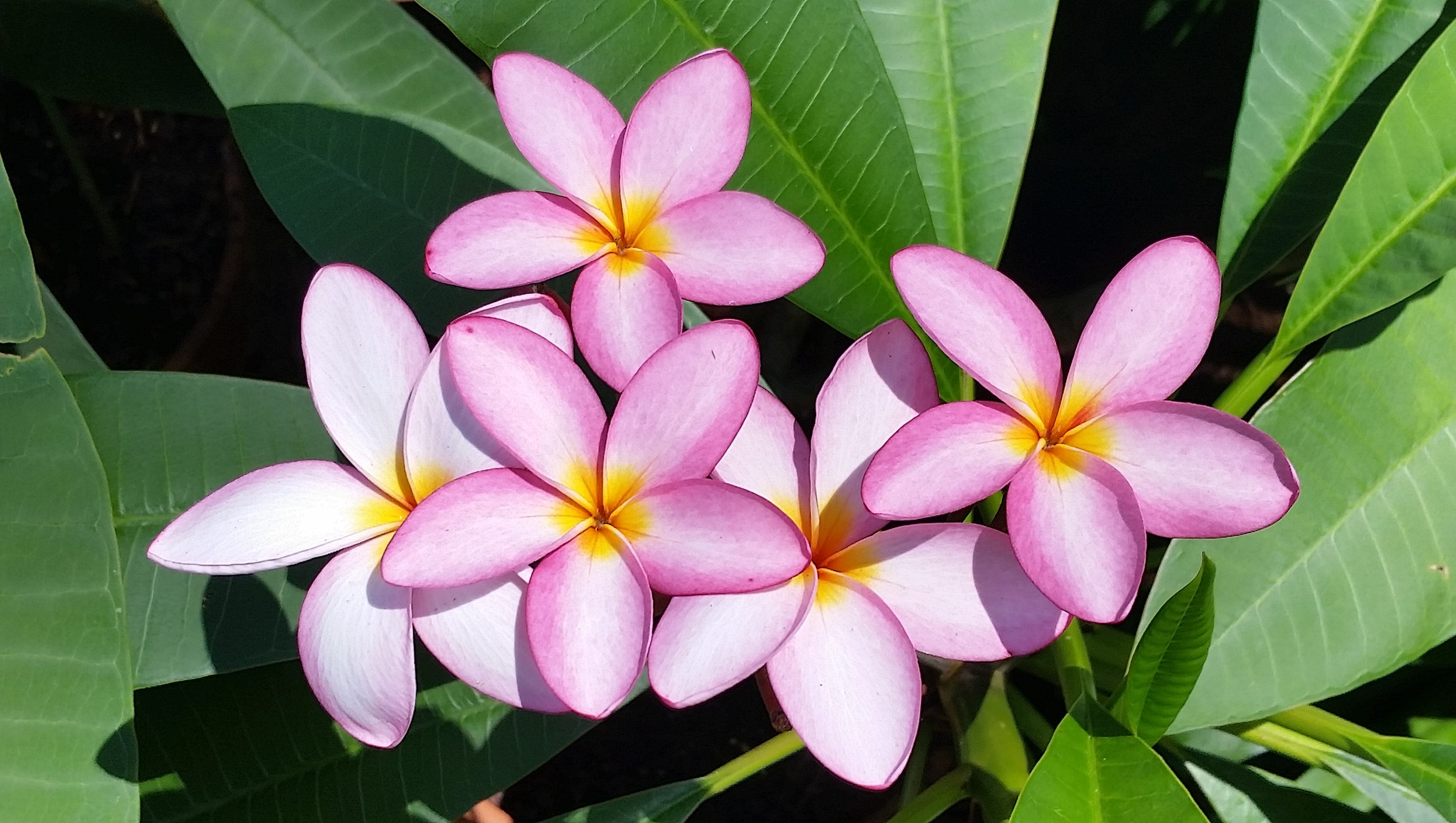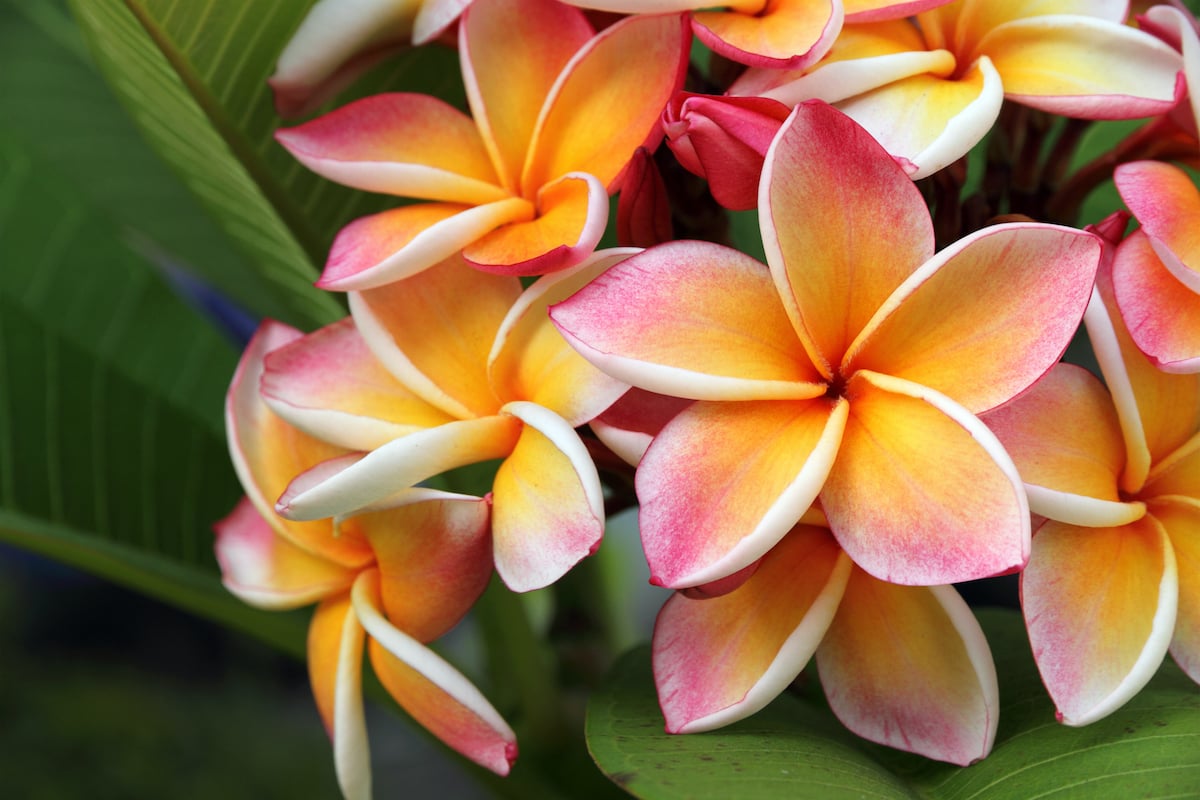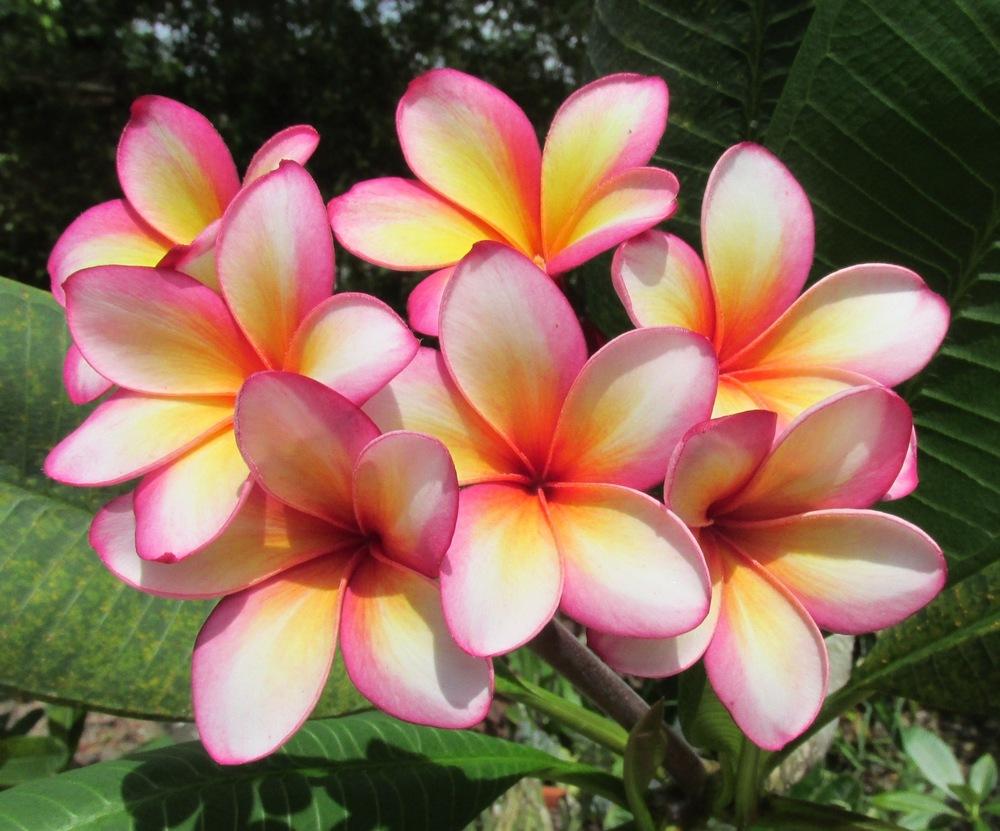For many people, the sight of a plumeria, with its truly lovely, often fragrant blossoms, brings thoughts of warm, sunny places and tropical breezes. These plants, you know, come in a rather wide array of flower colors, including soft pinks, deep reds, crisp whites, and cheerful yellows, and they really do add a touch of paradise to any garden or patio. It’s almost, in a way, like having a little piece of a faraway vacation spot right there at your home, creating a wonderfully relaxed atmosphere that many enjoy.
As pet parents, we naturally want to create a safe and happy home for our furry family members, particularly our curious cats who just love to explore every nook and cranny. There's nothing quite like the feeling of watching your feline friend batting at a toy or snoozing in a sunbeam, is that right? This deep care for our pets often means we look closely at everything in our surroundings, including the plants we bring into our living spaces, to make sure they pose no hidden dangers.
This brings us to the plumeria, a plant that, while beautiful, has a bit of a reputation for being less than friendly to our four-legged companions. So, if you're wondering about the safety of having these striking plants around your feline friends, this discussion will help shed some light on the potential risks and, too, what steps you might take to keep everyone in your household, both plant and pet, safe and sound.
- Doc On Fox True Story
- Suki Pregnant
- How Old Is Jodie Sweetin Husband
- What Happened To Todd Milsap
- Bob Costas Pink
Table of Contents
- Are Plumeria Plants a Hazard for Feline Friends?
- What Parts of Plumeria are Poisonous to Cats?
- Symptoms of Plumeria Poisoning in Cats - What to Watch For
- What to Do if Your Cat Eats Plumeria - Plumeria Poisonous to Cats
- How to Keep Your Cat Safe from Plumeria - Plumeria Poisonous to Cats
- Do Different Plumeria Varieties Pose Different Risks to Cats?
- Are There Safe Ways to Enjoy Plumeria with Pets Around?
- Understanding Plumeria Care and Pet Safety - Plumeria Poisonous to Cats
Are Plumeria Plants a Hazard for Feline Friends?
When you break a stem or pick a flower from a plumeria, you'll probably notice a milky, sticky substance that oozes out. This sap, you know, is the primary concern when it comes to the plant's interaction with animals. It's almost like the plant's own defense mechanism, meant to deter things from munching on it. For cats, who are naturally curious and might nibble on a leaf or brush against a broken stem, this sap can be quite irritating, causing a reaction that's not at all pleasant for them.
Pet health professionals, as a matter of fact, typically advise caution when plumerias are around cats. The general consensus is that while the plant isn't usually considered deadly in small amounts, it certainly can cause some very uncomfortable symptoms. It’s a bit like how some foods we enjoy might give us a stomach ache if we eat too much, only for cats, this plant can cause that kind of upset. So, yes, in some respects, it does pose a hazard, especially if a cat decides to have a little taste.
A cat’s natural inclination to explore with their mouth means that even a brief encounter with a plumeria plant could lead to them ingesting some of that irritating sap. This is why, you know, understanding the potential for harm is the first step in protecting your furry companion. It's not just about them eating a lot of it; even a little bit, frankly, can be enough to cause distress, so vigilance is key.
- Raquel Leviss Now
- Brooke Shields Grandchildren
- Doctor Odyssey Tristan
- Abby And Brittany Hensel Died Today
- Ozempic Libido
What Parts of Plumeria are Poisonous to Cats?
When we talk about the plumeria being a concern for cats, it's pretty important to understand that the entire plant, every single part of it, contains that milky, irritating sap. This means, you know, whether it’s a leaf, a flower, a stem, or even the roots, any piece of the plant could potentially cause problems for a curious feline. It’s not just one specific section; the whole thing is more or less consistent in its ability to cause irritation.
Even a tiny bite, or perhaps just a lick, could be enough to trigger an unwanted reaction in a cat. The sap itself, you see, has a somewhat sticky consistency, which means it can easily cling to a cat's fur, paws, or mouth if they happen to brush against a broken part of the plant. This makes it rather easy for them to ingest it, even without intentionally trying to eat a piece of the plant.
So, it’s not just about a cat sitting down for a meal of plumeria leaves; it’s also about the accidental contact that can happen during everyday play or exploration. Basically, any interaction with the plant that results in the cat getting that sap on them, and then perhaps grooming themselves, could lead to issues. This is why, you know, it’s best to treat the whole plant as something to keep away from your feline friends.
Symptoms of Plumeria Poisoning in Cats - What to Watch For
If a cat does happen to get into a plumeria plant, you might start to see some rather clear signs that something isn't quite right with them. One of the most common things to notice is an upset stomach, which can show up as throwing up or, perhaps, having loose stools. This is the body’s way, in some respects, of trying to get rid of whatever it thinks shouldn't be there, and it can be pretty uncomfortable for your pet.
Beyond digestive issues, there’s also the possibility of skin irritation, especially if the sap got onto their skin or paws. You might notice some redness or a bit of swelling around their mouth, on their paws, or anywhere else the sap made contact. It’s a bit like getting a mild rash, you know, and it can cause them to lick or chew at the affected area, which could, in turn, make things worse if they ingest more sap.
Sometimes, these signs might be quite subtle at first, maybe just a slight change in their usual behavior or a little less energy. This is why, you know, it's good to keep a close eye on your cat if you suspect they've had any interaction with a plumeria. Early detection can make a real difference in how quickly they recover and how much discomfort they have to go through, so, you know, pay attention to any unusual actions.
What to Do if Your Cat Eats Plumeria - Plumeria Poisonous to Cats
Finding your cat chewing on a plant that might be harmful can be a bit startling, but the first thing to do, truly, is to try and stay calm. Panicking won't help your cat, and it might make it harder for you to think clearly about what steps to take next. Just take a deep breath, and focus on the immediate actions you need to perform.
Once you’re a little more composed, the very next step is to remove your cat from the plant right away. Make sure they can't get to any more of it. Then, you know, it’s absolutely essential to contact your veterinarian or a pet poison helpline without delay. These professionals are the ones who can give you the best, most accurate advice based on your specific situation, and they can tell you what to look out for.
When you call for help, be ready to tell them a few key things: what part of the plumeria plant you think your cat ate, how much of it you believe they ingested, and any symptoms you've noticed so far. If you can, too, gently clean any visible sap from your cat's mouth or paws using a damp cloth, being careful not to let them lick any more of it. This quick action can make a real difference in their comfort and recovery, so, basically, act fast.
How to Keep Your Cat Safe from Plumeria - Plumeria Poisonous to Cats
The simplest and most effective way to protect your cat from plumeria plants is to make sure they simply cannot get to them. This might mean putting up physical barriers, like a small fence around outdoor plants, or placing potted plumerias on very high shelves or stands where your cat just can't reach. It’s about creating a clear separation, you know, between your curious cat and the plant.
For those who really want to have plumerias, placing them in rooms where your cat doesn't typically go, or perhaps in an outdoor area that is completely inaccessible to your feline friend, can be a good strategy. Supervision is also key; if your cat is near a plumeria, keep a close eye on them to make sure they aren't attempting to chew or play with it. It’s a bit like watching a small child around something fragile.
You could also try to discourage your cat from chewing on any plants by offering them safe, appealing alternatives. Things like cat grass, which you can easily grow indoors, can be a great distraction and a much safer option for them to nibble on. Providing plenty of toys and playtime can also keep their attention away from your plants, so, you know, give them other things to focus on.
Do Different Plumeria Varieties Pose Different Risks to Cats?
When you look at the wide array of plumeria varieties out there, like the famed 'Scott Pratt' or the commonly seen 'Aztec Gold' in places like South Florida, you might wonder if some are safer than others for your cat. You know, there’s also the 'Singapore White' that some people have, and the 'Celadine' that Alan, the owner of a nursery, might have sold you. The truth is, while there might be very slight differences in the exact concentration of the irritating compounds, it’s generally understood that all types of plumeria should be treated with the same level of caution when it comes to pet safety.
So, whether you have a very old, historical 'Scott Pratt' variety or a newer type, the milky sap that oozes from its stems and leaves is still going to be an irritant. It's almost as if the plant’s basic protective mechanism is consistent across its different forms. You shouldn't assume that just because one variety might look a little different, it’s somehow less harmful to your curious feline friend.
The safest approach, you know, is to assume that every single part of any plumeria plant, regardless of its specific name or color, carries the potential to cause discomfort for your cat. This means the lovely pinks, reds, whites, and yellows, all of them, should be kept out of reach. It's a bit like how different kinds of berries might look different but still have the same general effect if eaten, so, basically, treat them all the same.
Are There Safe Ways to Enjoy Plumeria with Pets Around?
For those who truly adore plumerias and want to have them in their lives, enjoying them while also keeping pets safe requires a good deal of thought and, frankly, very careful planning. The most secure way, of course, is to ensure there's a complete separation between your plumeria plants and your cats. This means setting up your garden or home in a way that your cat simply cannot access the plants at all.
You might consider growing your plumerias in outdoor areas that are completely fenced off or otherwise made inaccessible to your cats. For potted plants, which you might bring indoors during cooler weather, placing them very high up on sturdy shelves or inside a room that your cat is not allowed to enter can work. It's about creating a physical barrier that your clever cat just can't get past, you know, even if they try.
Ultimately, as a pet parent, the responsibility for your cat’s well-being rests with you. While it’s lovely to have beautiful plants, the safety of your furry family member should always be the top priority. It's a balance, really, between your love for these gorgeous plants and your commitment to providing a safe environment for your cat, so, in some respects, it means making smart choices about placement.
Understanding Plumeria Care and Pet Safety - Plumeria Poisonous to Cats
People who love plumerias often spend a good deal of time learning about their care, looking at things like the informative growing guides available on sites like garden.org, which even features a vast collection of images showing hundreds of varieties. This dedication to plant care, you know, is admirable, but it also needs to extend to thinking about how these plants fit into a home with pets. For instance, when you're looking at a lovely 'Aztec Gold' or a 'Singapore White' plumeria, perhaps one you rooted from a cutting, it’s very important to remember the safety aspect.
Many enthusiasts enjoy starting plumeria from cuttings, and it can be a truly rewarding experience to watch them grow. A typical cutting is often eight to twelve inches long, but larger ones are also quite easy to root. When you're handling these cuttings, or any part of the plant for that matter, you’ll notice that milky sap. This is precisely the time to be extra careful, as the fresh cuts will ooze that irritating substance, which, you know, could easily get on your hands and then, if you're not careful, transferred to something your cat might interact with.
The journey of acquiring plumerias often involves visiting nurseries or even places like a home improvement store, as one person mentioned buying a $27 plumeria from HD. While Derick might have advised against buying plumeria from such places, and Alan, a nursery owner, offered extensive advice and tours, the source of the plant doesn't change its inherent properties. Whether it’s a 'Celadine' or a 'Singapore' bought from a helpful owner, or a variety whose health was discussed by someone like eolive1091, the fact remains that the plant’s potential to cause issues for cats is consistent across the board.
So, as you continue to grow your collection of plumerias, maybe adding more of the 534 varieties out there, or caring for ones like the 'Singapore White' that might need a little help, always keep pet safety in mind. The joy of having these beautiful plants, which are native to places like the Caribbean and even parts of South Florida, should always be balanced with the well-being of your furry companions. It's about enjoying your passion for gardening responsibly, ensuring that your vibrant plant collection and your beloved pets can coexist happily and safely, so, you know, think about both.
- Alex Morgan Daughter Charlie
- Angelina Jolie Halloween
- Cillian Murphy And Emily Blunt Movie
- Chad Duell Relationships
- Micah Parsons Kids


